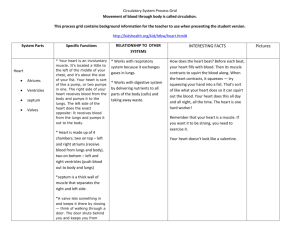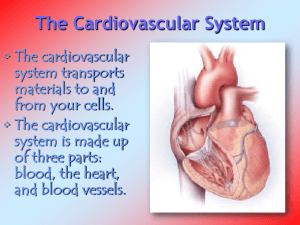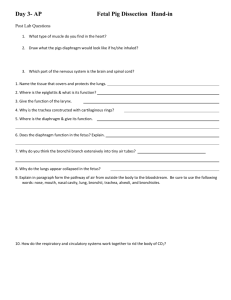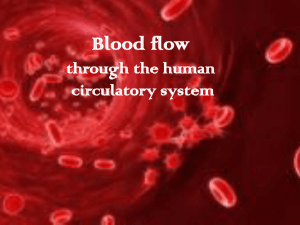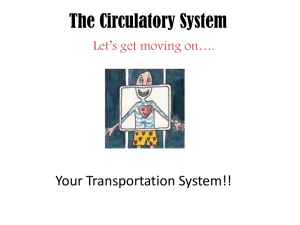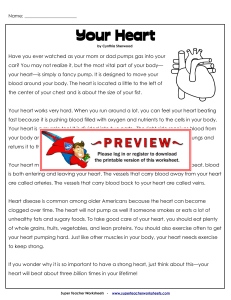Name Heart Animation http://www.bostonscientific.com/templatedata
advertisement
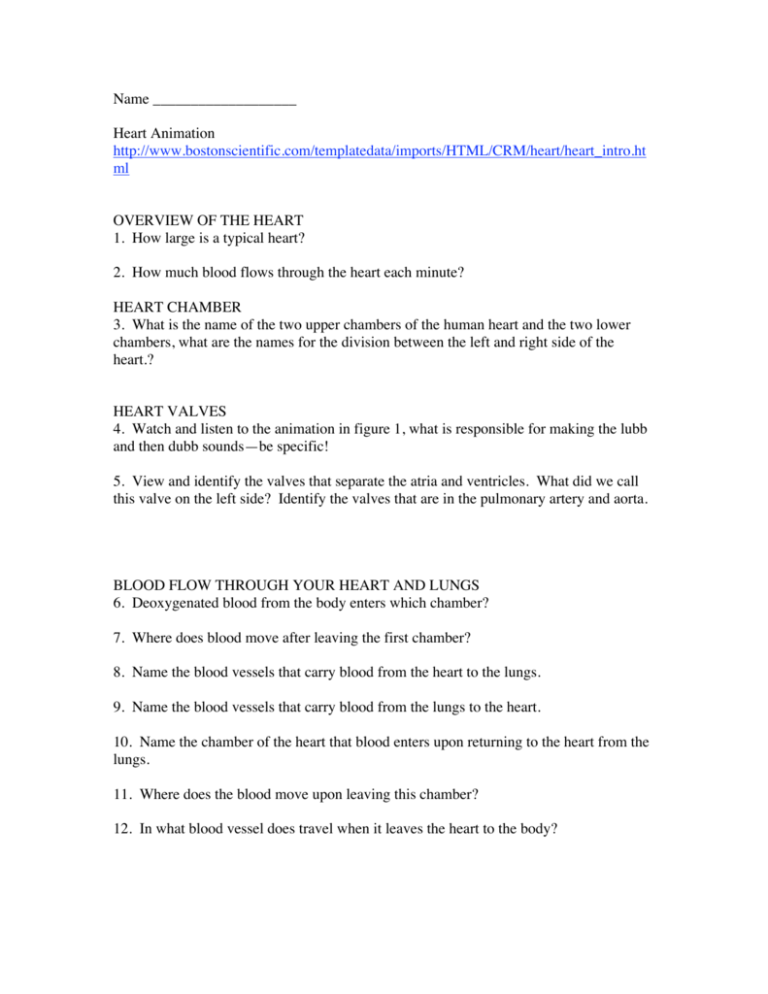
Name ___________________ Heart Animation http://www.bostonscientific.com/templatedata/imports/HTML/CRM/heart/heart_intro.ht ml OVERVIEW OF THE HEART 1. How large is a typical heart? 2. How much blood flows through the heart each minute? HEART CHAMBER 3. What is the name of the two upper chambers of the human heart and the two lower chambers, what are the names for the division between the left and right side of the heart.? HEART VALVES 4. Watch and listen to the animation in figure 1, what is responsible for making the lubb and then dubb sounds—be specific! 5. View and identify the valves that separate the atria and ventricles. What did we call this valve on the left side? Identify the valves that are in the pulmonary artery and aorta. BLOOD FLOW THROUGH YOUR HEART AND LUNGS 6. Deoxygenated blood from the body enters which chamber? 7. Where does blood move after leaving the first chamber? 8. Name the blood vessels that carry blood from the heart to the lungs. 9. Name the blood vessels that carry blood from the lungs to the heart. 10. Name the chamber of the heart that blood enters upon returning to the heart from the lungs. 11. Where does the blood move upon leaving this chamber? 12. In what blood vessel does travel when it leaves the heart to the body? ELECTRICAL SYSTEM OF THE HEART 13. Explain the how the SA Node and AV Node function in conducting the electrochemical signal of muscle contraction. ELECTRICAL SIGNALS AND BLOOD FLOW 14. Describe what is meant by a sinus rhythm and an arrhythmia. 15. Be sure to view the path of an electrical signal animations. INTRO TO BLOOD VESSELS 16. Compare the structure of arteries, veins and capillaries BLOOD VESSELS IN YOUR HEART 17. Describe what is meant by coronary arteries and veins and those that are most likely to become blocked.
